Chemistry
Type of resources
Topics
Keywords
Contact for the resource
Provided by
Years
Formats
Update frequencies
Scale
-
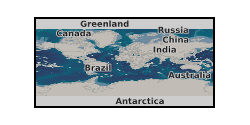
Paper, Surface charge and growth of sulphate and carbonate green rust in aqueous media, Geochimica et Cosmochimica Acta and associated data. NERC grant: Re-inventing the planet: The Neoproterozoic revolution in oxygenation, biogeochemistry and biological complexity
-
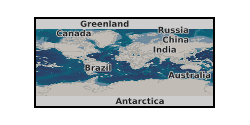
Major element glass chemistry of deposits of the Campanian Ignimbrite from proximal and distal units across Campania and central Italy. Details of the samples that this data relates to can be found in: Gallo, R.I., Ort, M.H., Iacovino, K., Silleni, A., Smith, V.C., Giordano, G., Isaia, R., Boro, J., 2023. Reconciling complex stratigraphic frameworks reveals temporally and geographically variable depositional patterns of the Campanian Ignimbrite, Geosphere, 22 p. doi:10.1130/GES02651.1
-

The North Sea Interactive (NSI) project was an 8-month NERC funded project led by Heriot-Watt University, in collaboration with the BGS and NOC. The aim of the project was to develop a new decision-support tool that would translate existing marine environmental data into an interactive mapping product for the offshore oil and gas industry. The objectives of the project were achieved through the integration of the North Sea Benthos database (UKBenthos) with NERC's regional North Sea marine sediment data (BGS) and layers of modelled hydrodynamics (NOC). Aligning the biological, chemical, geological and hydrodynamic datasets in a single GIS product provides the oil industry and government regulators with a practical means of accessing this important archive of environmental data. The North Sea Benthos database (UKBenthos) was developed by Heriot-Watt University on behalf of UKOOA (now Oil and Gas UK) in the 1980s. Alongside macrobenthos, the database includes sediment properties, concentrations of aromatic compounds, total oil and metals. It currently includes data from 1975 to 2011 from 237 platforms and is continually being updated as new survey results are received by Oil and Gas UK.
-
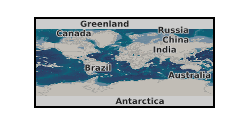
This dataset of paper records holds details of analysis of all the sample batches (from both internal and external customers) analysed by the Analytical Geochemistry Laboratory of the BGS since June 1996. It was installed to underpin the UKAS (United Kingdom Accreditation Service) accreditation of the geochemistry laboratories at Keyworth, which was awarded in August 1999. There is a file for each batch of samples submitted for analysis. The file documents the progress of the samples through the laboratories, including sample registration, sample processing, raw data from analytical instruments and the data reported to the client. The records are archived to provide supporting evidence for any query regarding geochemical data provided by the laboratories.
-
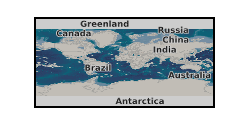
The LIMS (Laboratory Information Management System) holds information about the sample preparation and chemical analysis of samples (from internal and external customers) handled by the BGS chemistry laboratories at Keyworth. Data covers X-ray fluorescence spectrometry (XRFS) analyses, loss on ignition (LOI), pH for GBASE. Coverage will be extended to other BGS laboratories with time. It is not intended that the results of chemical analysis will remain on the system indefinitely, data for internal customers being passed to corporate or project datasets, data for external clients being archived.
-
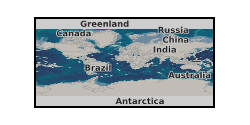
This dataset contains records of the BGS analytical chemistry laboratories prior to the year 2000. It is basically an archive of original records and includes card indexes, files and raw analytical data. Files may contain background detail on the samples themselves but coverage is variable; information has been collected over many years in different formats. Different analytical techniques have been used over the years; consequently data are of variable quality as systems have improved with time. Samples analysed could be from anywhere in the world and were usually analysed for internal BGS customers. These are paper records and are available for viewing or copying. Any constraints on data usage would be dependant on individual files. Anyone wishing to access the records would require assistance from staff familiar with the data.
-
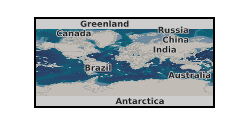
The project is aimed at understanding how a number of economically and geologically important chemical elements partition themselves between the silicates of the outer parts of the Earth and sulphides, minerals and liquids rich in sulphur. Although sulphur is not very abundant in the Earth, it has a powerful impact on the behaviour of a wide range of elements in Earth's crust and underlying mantle. For example, the majority of ore bodies rich in nickel, copper, gold and platinum are sulphides. Many of them are formed when sulphides separate from molten silicates in volcanic areas. A principal aim of my project is to experimentally reproduce the conditions under which sulphides separate and to determine how they extract the economically important elements from the host volcanic rocks. A second aim is to use my experimental results to determine whether or not a large mass of sulphide was extracted from the molten earth early in its history (4500 million years ago) and dissolved into the metallic core. In order to study how elements are distributed into sulphide I perform experiments at high pressures and temperatures, typically 15000 atmospheres pressure and 1400 degrees C in a large hydraulic press. After treatment at high pressure and temperature, the samples (typically about 1x1x1 millimeters) are rapidly cooled to room temperature and pressure and examined using a range of microanalytical techniques. The latter enables me to resolve chemical composition on the scale of 10 microns (or 10 millionth's of a meter).
-
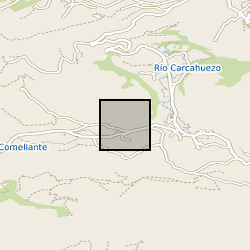
The following dataset provides climate and cave monitoring data from Cueva de Asiul northern Spain between 2010 and 2014. This data set was initially presented in Smith et al., (2016) Cave monitoring and the potential for palaeoclimate reconstruction from Cueva de Asiul, Cantabria (N. Spain). International Journal of Speleology, 45(1), 1-9. This data set represents the majority of cave monitoring undertaken at this site as part of a NERC funded PhD project (NERC studentship grant NE/I527953/1), data collection either occurred within this single cave site (43°19’0’’N, 3°35’28’’W) or within 1km of the cave in the village of Matienzo. The data set includes high resolution monitoring data for a range of climatic parameters including, cave and external temperature, rainfall direction, amount and oxygen isotope value, soil and cave air pCO2 concentration and carbon isotope value, cave drip rates and oxygen and deuterium isotope values. All data was collected using standard automated logging systems and the data/ samples were analysed either at Lancaster University, UK or at the NERC isotope geosciences laboratory, British Geological Survey, UK. Any missing data is a result of automated logger malfunction and is explained in full in the above cited paper. In combination this data offers a very high resolution, multiyear veiw into hydrological and cave ventilation processes, each of which play a major role in controlling speleothem growth and chemical makeup in Cueva de Asiul. The data set presents the pertinent background monitoring for the accurate interpretation of speleothems from this cave site. Those who may be interested in the data set include cave scientists who wish to implement a monitoring station/understand how climatic parameters influence speleothem development, or those who wish to obtain focused climate data from the Matienzo region between 2010 and 2014. The data set was collected by members of Lancaster University and the Matienzo caving expedition as part of NERC studentship grant NE/I527953/1. All cave monitoring was undertaken with kind permission from Gobierno de Cantabria, Cultura.
-
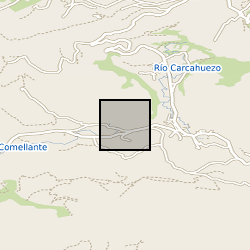
The data set provides climate and cave monitoring data from Cueva de Asiul, Cantabria, northern Spain. This data was initially presented in graphical form in Smith et al., (2015) - Drip water Electrical Conductivity as an indicator of cave ventilation at the event scale. Science of the Total Environment, 532, 517-527. All data was collected from within the cave or within a 1km radius of the cave site (43°19'0"N, 3°35'28"W) using instrumentation set up as part of a PhD project running between January 2010 and January 2014. The data set includes high resolution event based monitoring data for a range of climatic parameters - cave and external temperature, rainfall amount, soil pCO2 cave air pCO2 concentration, cave drip water calcium saturation, drip water electrical conductivity and cave air pressure. This data was analysed at Lancaster University, UK or at the NERC isotope geosciences laboratory, British Geological Survey, UK. Any missing data from this 4 year period is a result of instrument malfunction and is clearly explained within the above cited paper. The electrical conductivity component of the data set offers the first data set of this type form any cave system, using a submerged CTD Diver probe and novel piston flow housing. The rest of the data constitute a part of a larger cave monitoring data set produced during the project using a number of standard automated cave monitoring devices. When combined this data leads us to conclude that cave drip water electrical conductivity is driven primarily by changes in cave air pCO2 at Cueva de Asiul and therefore responds to cave ventilation dynamics, rather than by changes in karst water residence time. Without such extremely high resolution monitoring the impact of cave ventilation on event based changes in drip water electrical conductivity would not have been established for this site. This data set should be of interest to anyone studying similar cave sites, interested in the role of electrical conductivity as a monitoring tool within caves and cave ventilation on speleothem growth dynamics. The data set was collected by members of Lancaster University and the Matienzo caving expedition as part of NERC studentship grant NE/I527953/1. All cave monitoring was undertaken with kind permission from Gobierno de Cantabria, Cultura.
-
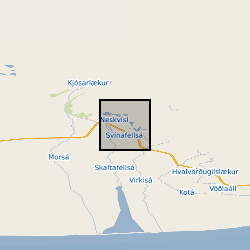
Stable isotope and inorganic chemistry data for samples of groundwater from boreholes and springs in the sandur aquifer; glacial meltwater and river water; and glacier ice, from Virkisjokull glacier observatory. Selected water chemistry and stable isotope data are reported in Ó Dochartaigh, B. É., et al. 2019. Groundwater?- glacier?meltwater interaction in proglacial aquifers, Hydrol. Earth Syst. Sci. https://doi.org/10.5194/hess-2019-120
 BGS Data Catalogue
BGS Data Catalogue